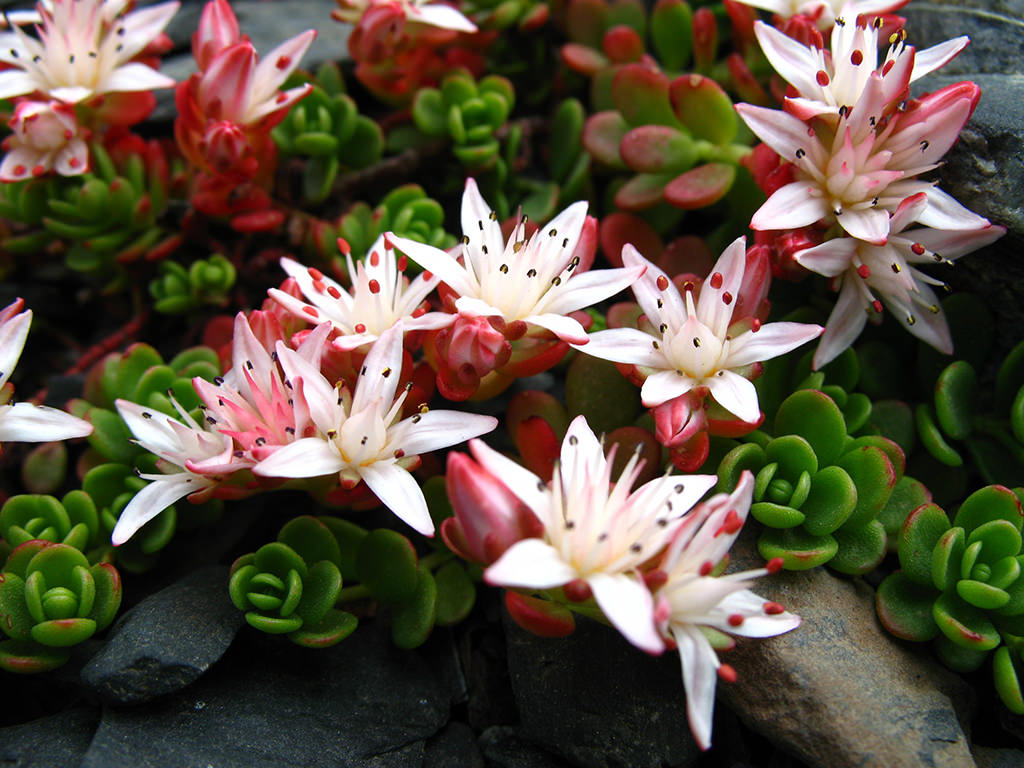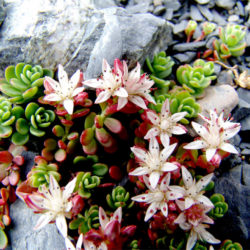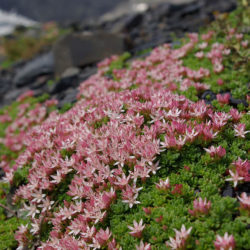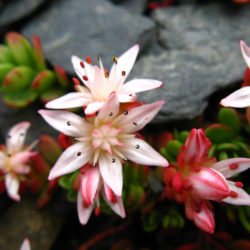Scientific Name
Phedimus stevenianus (Rouy & E.G.Camus) 't Hart
Synonym(s)
Asterosedum stevenianum, Sedum hametianum, Sedum roseum, Sedum stevenianum
Scientific Classification
Family: Crassulaceae
Subfamily: Sempervivoideae
Tribe: Umbiliceae
Genus: Phedimus
Origin
This species is native to Georgia (eastern and central Caucasus), where it grows on rocky sites in the alpine zone.
Description
Phedimus stevenianus, formerly known as Sedum stevenianum, is a rare succulent with very short, branching, ascending, densely leafy sterile stems and slender, up to 0.4 inches (10 cm) long flowering branches appressed to the ground or ascending. Leaves are very fleshy, spatulate with entire margins, and about 0.25 inches (0.6 cm) long and 0.15 inches (0.4 cm) wide. Flowers are 5-merous with a star-shaped corolla, whitish to pink with reddish kell and pink or reddish anthers. They appear in summer in corymbs of 3 to 9 flowers.
Etymology
The specific epithet "stevenianus (stee-ven-ee-AY-nus)" honors Christian von Steven (Khristian Khristianovich Steven) (1781-1863), a Finnish-born Russian botanist and entomologist.

How to Grow and Care for Phedimus stevenianus
Light: This light-loving plant will tolerate partial shade, but it prefers full sun and grows best in warmer environments. Plant P. stevenianus in an area of your garden that gets at least 6 hours of sunlight a day.
Soil: This succulent thrives in any well-drained soil. Good drainage is critical for preventing root rot or fungal diseases.
Hardiness: P. stevenianus tolerates frost and can stay outdoors when the temperature drops below freezing. It can withstand temperatures as low as -30 to 30 °F (-34.4 to -1.1 °C), USDA hardiness zones 4a to 9b.
Watering: The best way to water your P. stevenianus is to use the "soak and dry" method. Get the soil completely wet, and then wait until the soil is dry before watering again.
Fertilizing: Feed with low-balanced fertilizer to keep your plant happy and healthy. Use a diluted dose of half the strength recommended on the package.
Repotting: Repot your plant when it outgrows its current pot by moving it out to a larger container to hold the plant better. Spring is the best time to repot P. stevenianus. Make sure the soil is dry before you begin the repotting process.
Propagation: Like all members of the genus Phedimus, this succulent can be grown from seeds, division, or stem cuttings. Dividing your P. stevenianus is the best method to propagate because it is easy and usually very successful. Divide in spring when new shoots are seen. P. stevenianus is also easily propagated from cuttings. Sow seeds in spring in well-drained soil in a sunny position.
Learn more at How to Grow and Care for Phedimus.
Toxicity of Phedimus stevenianus
P. stevenianus can be mildly toxic to humans and animals.
Links
- Back to genus Phedimus
- Succupedia: Browse succulents by Scientific Name, Common Name, Genus, Family, USDA Hardiness Zone, Origin, or cacti by Genus
Photo Gallery
Click on a photo to see a larger version.


